- Home
- Steven Brust
The Paths of the Dead (Viscount of Adrilankha)
The Paths of the Dead (Viscount of Adrilankha) Read online
For Betsy
Table of Contents
Title Page
RESTORATION
BOOK ONE - The Paths of the Dead
Preface
BOOK ONE - The Paths of the Dead
Chapter the First
Chapter the Second
Chapter the Third
Chapter the Fourth
Chapter the Fifth
Chapter the Sixth
Chapter the Seventh
Chapter the Eighth
Chapter the Ninth
Chapter the Tenth
Chapter the Eleventh
Chapter the Twelfth
Chapter the Thirteenth
Chapter the Fourteenth
Chapter the Fifteenth
Chapter the Sixteenth
Chapter the Seventeenth
BOOK TWO
Chapter the Eighteenth
Chapter the Nineteenth
Chapter the Twentieth
Chapter the Twenty-First
Chapter the Twenty-Second
Chapter the Twenty-Third
Chapter the Twenty-Fourth
Chapter the Twenty-Fifth
Chapter the Twenty-Sixth
Chapter the Twenty-Seventh
Chapter the Twenty-Eighth
Chapter the Twenty-Ninth
Chapter the Thirtieth
Chapter the Thirty-First
Chapter the Thirty-Second
Chapter the Thirty-Third
Chapter the Thirty-Fourth
A Few Words of Welcome and Celebration from the Publisher
BOOKS BY STEVEN BRUST - THE DRAGAERAN NOVELS
Some Notes Toward Two Analyses of Auctorial Method and Voice
The Lord of Castle Black
Acknowledgments
Notes
Copyright Page
RESTORATION
“Your lordships perceive,” began the envoy, “that I wear the Phoenix livery.”
“We had even remarked upon it,” said Daro.
“I serve the one called Sethra Lavode, whose name is, I expect, not unknown to you. And Sethra, on her part, serves Zerika.”
“Zerika?” said Khaavren. “I do not believe I know her, but—”
“She is,” said the envoy, “the last being born of the House of the Phoenix. Her mother was the Princess Loudin, the Phoenix Heir at the time of Adron’s Disaster. Her father was—”
“Vernoi,” said Khaavren, suddenly remembering a conversation with that worthy gentleman, a scant few days before the fall of the Empire.
“It seems Lord Vernoi had a premonition of catastrophe, and sent his wife, the Princess Loudin, to a safe place some days before the Disaster, where she was delivered of a child.”
“Zerika.”
“Exactly. And it is now the last time …” His voice trailed off and he looked expectantly at Khaavren.
“Yes? It is now time?”
“Well, Sethra Lavode deems the time is ripe.”
“The time is ripe for what, my dear sir?
“As to that, I cannot say …”
The Viscount of Adrilankha
BOOK ONE
The Paths of the Dead
Describing Certain Events Which Occurred
Between the 156th and the 247th Years
of the Interregnum
Submitted to the Imperial Library
By Springsign Manor
House of the Hawk
On this 3rd day the Month of the Athyra
Of the Year of the Vallista
Of the Turn of the Jhereg
Of the Phase of the Phoenix
Of the Reign of the Dragon
In the Cycle of the Phoenix
In the Great Cycle of the Dragon
Or, in the 179th Year
Of the Glorious Reign
Of the Empress Norathar the Second
By Sir Paarfi of Roundwood
House of the Hawk
(His Arms, Seal, Lineage Block)
Presented, as Always,
To Marchioness Poorborn
With Gratitude and Affection
Preface
Concerning the Fall of the Empire,
Lord Adron e’Kieron, and the
“Dragon-Jhereg War”
This preface is addressed specifically to those who have read our earlier histories of The Phoenix Guards and Five Hundred Years After, readers to whom this volume is their first introduction to those characters with whom we have concerned ourselves are invited to pass over it with full confidence in having missed nothing of any significance. Indeed, it is our firm hope that such readers will need no introduction other than this volume, and we will confess to having failed in our duty should any reader feel himself bewildered because of unfamiliarity with history in general, or with our history in particular.
That said, we wish to indulge our right as the author to address certain issues that have arisen from the publication of the works mentioned above.
Some students of history who have done us the kindness to follow us through our previous volumes have raised questions concerning a supposed unpleasantness within the House of the Dragon, and of a “war” between the Dragon and the Jhereg, and of the influence of these events on the fall of the Empire—questions, no doubt, encouraged by information disseminated by our brother historians. We have been accused of neglecting to pay sufficient attention to these affairs when we treated with the matter of Lord Adron e’Kieron and what is popularly called “Adron’s Disaster.”
For those who have not made the assiduous study of history that might lead to these questions, allow us to mention a few facts which might, hereafter, permit us to both clarify the events of this vital yet confusing stage of history, and explain the reasoning which led us to make those choices we made.
A certain Dragonlord, the Count of Kee-Laiyer Meadows, who was the Dragon Heir for a short time early in Tortaalik’s reign, was killed in battle with an army commanded by Sethra Lavode. There were accusations that Lord Adron e’Kieron, who had been the Dragon Heir before and after, had had Kee-Laiyer assassinated in the middle of the battle, and had then protected the assassin. There was bloodshed over the dispute, but the issue was never resolved because the Interregnum intervened. Moreover, several powerful Dragonlords were struck down by Jhereg assassins owing to some complications that many believe stemmed from the affair mentioned above.
It is perhaps true that the author has been culpable if, as some say, these facts conceal issues important to an understanding of Adron’s Disaster, which matter was lightly treated with in our previous history. It is, however, the opinion of the author that neither the squabble within the House of the Dragon nor the dispute between the Dragon and the Jhereg had much bearing on Adron’s decision to use elder sorcery against the Orb; and, as the reader is by now aware, the author has diligently avoided any digressions of any sort in unfolding the history of Sir Khaavren and his friends.
The reader may recall that when we were first introduced to Lord Adron, in our history of The Phoenix Guards, he was then the Dragon Heir. When he appeared in our later history of Five Hundred Years After he was the Dragon Heir. If there was, in between, a period of time, more or less prolonged, in which he was not the Heir, we can hardly be held responsible for failing to describe events that fall outside of the realm of our investigations.
But we feel it our duty, in any case, to separate fact from myth; truth from legend; possible from impossible. We will acknowledge, then, that there are stories—and these from reliable sources—that have linked Mario Greymist, who slew the Phoenix Emperor, with Lord Adron. While these stories, perhaps, have their origin in someone who knew A
dron well, we should also add that these stories have come from one who also knew Mario, and who had reason to wish history to hold a higher opinion of the assassin than, perhaps, he deserves. We nevertheless maintain that under no circumstances would Lord Adron have used an assassin, nor given sanctuary to one. We defy anyone, however well informed, to point to anything even Adron’s detractors of the period have said, that would lead us to believe the Duke of Eastmanswatch would countenance such methods under any circumstances whatsoever.
We should add that the vilification of Lord Adron that has occurred since the Disaster is as natural as it is predictable; nevertheless, this author will not indulge in such conduct himself. Whatever else he was, Adron was above all a human being, with all of the strengths and weaknesses that implies: there is no more reason to treat him as an inhuman monster than there is to present him as a military genius. As we have attempted to do with all those who pass through our pages, we endeavored to present him as he was, leaving judgment to the reader. Those who have censured us for “apologizing” for the Duke in our previous work no more deserve our attention than do those who have accused us of “bending the fabric of history to sustain a dubious maxim,” as one supposed historian has suggested.
There nevertheless remain two valid questions: Did the quarrels within the House of the Dragon, and between the Dragon and the Jhereg, contribute to the fall of the Empire? And, if so, is the historian negligent in having failed to discuss them?
In the opinion of this historian, the rôle played by these two quarrels in the fall of the Empire is negligible at best—the disagreement over who was to be Heir, which occurred early in Tortaalik’s reign, was resolved well before the end of it; and if a certain bitterness lingered among the supporters of Kee-Laiyer, it was an impotent bitterness. More importantly, those few wizards who were assassinated by the Jhereg could have no effect on the power unleashed by Lord Adron’s spell, and to claim that, had they been present, he would not have required the spell, is to engage in the most base and unhistorical sort of speculation.
The figure at the center of this controversy is, of course, Adron’s daughter, Aliera, who appears to have made certain comments to the Enchantress of Dzur Mountain. If Aliera did make these comments, then we should point out that they were made to Sethra Lavode, who then somehow relayed them to another party, from whose mouth or pen they fell into the hands of a supposed historian. The reader is encouraged to consider: Aliera makes an interpretation; Sethra summarizes this interpretation; some third party records this summary; a historian writes based on this record. How far removed we are from truth! To call this “hearsay” is to accord it far more weight, even, than it deserves.
This historian, we may add, has, over the years, had the honor to carry on a limited but fascinating correspondence with Sethra Lavode, in the course of preparing for the work (as yet unpublished) from which, accidentally, sprang our two previous histories; and the Enchantress has never mentioned any such conversation to this historian.
In short, we would like to say that, while historical speculation is, perhaps, an amusing pastime, it has no place in serious works of history; and this author has avoided, and will continue to avoid, such speculation in the course of laying before the reader the interesting lives of those few persons with whom these narratives have concerned themselves.
There are other remarks that could, perhaps be made; but we long ago made the choice, regarding these works, to avoid insulting our readers by explaining matters with which anyone is likely to be familiar. We would no more offer an explanation, then, of conditions obtaining during the Interregnum, where we begin our narrative, than we would describe the location of Adrilankha itself.
With this firmly established, we hope the reader will, without further delay or digression, allow us to embark once more on a narrative journey through a stormy and enchanting time in our recent past.
—Paarfi 2/2/10/11 (Norath. II: 181)
BOOK ONE
The Paths of the Dead
The Viscount of Adrilankha
In Which We Introduce the Principal
Actors in Our Drama, and Most of Them
Set Out on Diverse Missions
Chapter the First
How a Traveler Wishing for a Name
Met a Coachman Wishing for a Drink
And a Bargain Was Reached
It was on a Homeday in the early summer of the 156th year of the Interregnum that a traveler entered a small village in the East. This village was, we should say, far to the East—farther than any except the most intrepid of explorers have ventured, for it involves crossing the range of mountains that lie beyond the Laughing River, and descending, from there, into a land of myth, legend, and, if we are to be permitted, history. Knowing, as we do, that few of our readers will ever venture into these lands, we hope we may be permitted a moment to sketch the peculiar landscape that might greet the traveler who emerges from the narrow Grinding Pass between Mount Horsehead, also called Hookjaw Mountain, and the Broken Mountain, which may also have other names, although these have not come down to us.
In this place the traveler in his coach or the reader on his couch would find a gradually widening gorge or valley descending from the mountain in the place where a furious river had once run. The valley is as green and lush as one might expect from what had once been the bottom of a river, while above it stand ranks and rows of greyish rock, cut or molded into the strangest of formations, some standing two or even three hundred feet high, and many of them appearing almost manlike in their aspect. These are called by those who dwell in the valley the Guardians, and these Easterners, a peaceful agricultural tribe called Nemites, believe, in fact, that these rocks contain a sentience that watches over them. What is more significant, however, is that all of the neighbors of the Nemites, including the warlike Letites to the north and the fierce Straves to the south, also believe it, for which reason the Nemites have dwelt in this valley for years upon years without the least disturbance.
While phenomena such as strange and oddly beautiful rock formations—caused by we know not what fluke of wind, water, and earth—might well serve to protect these Easterners from others of their own kind, one could hardly expect them to do any good against the less superstitious human; especially those of the House of the Dragon who, after all, had dwellings not twenty leagues away, on the other side of the Broken Mountain. What, then, has protected the Nemites from the Dragonlords? Could it be that, in fact, they are correct in their beliefs concerning the formations of stone that seem to watch over them day and night? Perhaps. Yet it seems to us that the answer lies more in geography than in magical philosophy. The very existence of the Broken Mountain has served, for thousands of years, to shunt large groups to one side or another of the Nemite Valley, and both of its sides, or “flanks” to put it in the military terms of the House of the Dragon, are guarded by the very tribes who are filled with superstitious dread of the Guardians. In this way, one might say that the Guardians have, indeed, done exactly what the Nemites believe them to do.
The astute reader will have observed that we have explained why the valley is safe from the west, from the north, and from the south, and is, no doubt, furiously wondering what lies to the east. The author would like to assure the reader that we have not forgotten this cardinal direction, but intend to take him there directly; indeed, it is for the purpose of this easterly journey that we have introduced the Nemites who, though certainly of interest in and of themselves, form no part of our history.
To the east, then, is one of the more peculiar features of landscape to be found anywhere in the world. It is as if the gods who made the world had decreed that no one should be permitted to pass eastward from the land of the Nemites. To begin, the valley is sealed off by a sheer cliff of granite—to all appearances, a slab of rock nearly four thousand feet high, three miles wide, and running almost straight up. From its peak, it runs down to the east in a slope only slightly less sheer. How such an object could occur in
the course of nature is a curiosity rivaled only by the Rising Waterfall of Cordania or the Steam Caves of Northern Suntra. But however imposing Man might consider this object, Nature, evidently, did not deem it sufficient, for beyond “the Rise,” as the Nemites call it, is a land of bogs and mires, where what few dry patches exist are liable to turn into quicksands whenever the sudden and unpredictable rains visit the district. This useless, boggy area continues for several miles—all the way, in fact, to Thundering Lake, or Lake Nivaper as some call it: that wide, blue, scenic, but terrifying lake, surrounded by harsh rocks and subject to the sort of weather that one might anticipate finding at sea, but should hardly expect to encounter in a freshwater lake, whatever its size.
The Thundering Lake dominates the region both physically and economically, and should the author indulge in a description of the various small kingdoms and independent villages that thrive or struggle along its shore the reader might well grow impatient, to the chagrin of the author, who prides himself on laconicity. Therefore, bowing to the reader’s understandable desire to learn what there is in this region that bears upon our story, we focus our attention upon a village directly opposite the Lake from the the Rise. This is the village of Blackchapel.
Alas, little is known of the strange gods and demons who were once worshiped here by the heathen Easterners, but at some point, most likely around the middle of the Third Cycle, an enclosed altar was built to one or more of them, which became a center of prayer and commerce. In the opinion of this historian, the first chapel (there have been at least six) was probably erected to a fish god, because the district has thrived on fishing for as long as anyone can recall, and because certain markings in and around the altar could be interpreted as crude representations of primitive fishing gear.

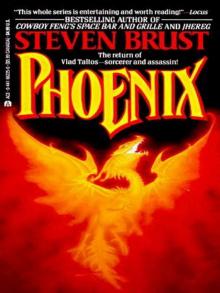 Phoenix
Phoenix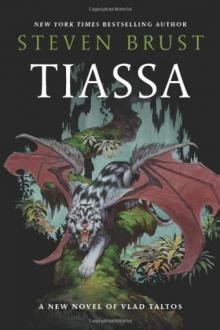 Tiassa
Tiassa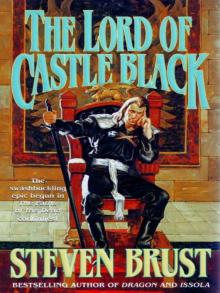 The Lord of Castle Black
The Lord of Castle Black To Reign in Hell: A Novel
To Reign in Hell: A Novel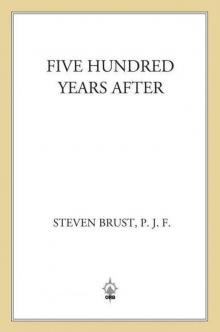 Five Hundred Years After (Phoenix Guards)
Five Hundred Years After (Phoenix Guards)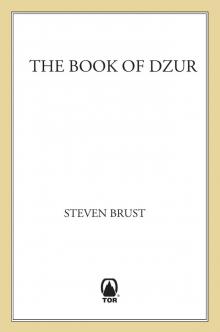 The Book of Dzur: Dzur ; Jhegaala
The Book of Dzur: Dzur ; Jhegaala The Paths of the Dead
The Paths of the Dead Jhegaala
Jhegaala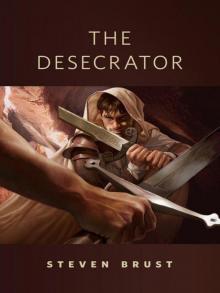 The Desecrator: A Tor.com Original
The Desecrator: A Tor.com Original Agyar
Agyar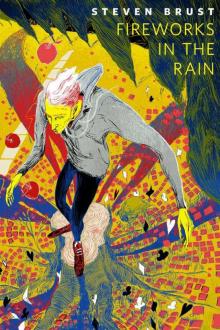 Fireworks in the Rain
Fireworks in the Rain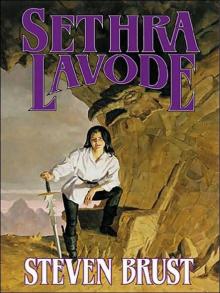 Sethra Lavode
Sethra Lavode The Book of Athyra
The Book of Athyra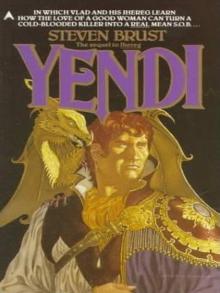 Yendi
Yendi Good Guys
Good Guys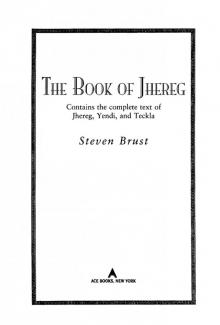 The Book of Jhereg
The Book of Jhereg Cowboy Feng's Space Bar and Grille
Cowboy Feng's Space Bar and Grille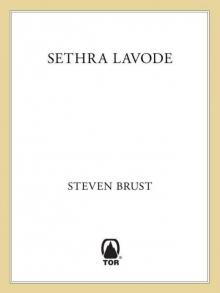 Sethra Lavode (Viscount of Adrilankha)
Sethra Lavode (Viscount of Adrilankha) My Own Kind of Freedom
My Own Kind of Freedom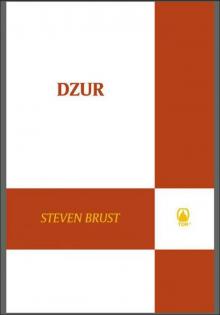 Dzur (Vlad Taltos)
Dzur (Vlad Taltos)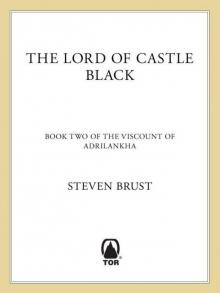 The Lord of Castle Black: Book Two of the Viscount of Adrilankha
The Lord of Castle Black: Book Two of the Viscount of Adrilankha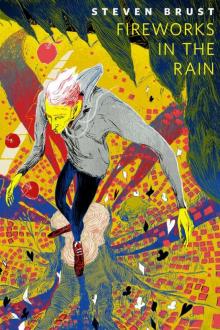 Fireworks in the Rain: A Tor.Com Original
Fireworks in the Rain: A Tor.Com Original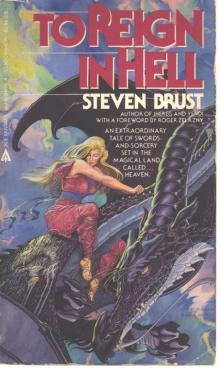 To Reign In Hell
To Reign In Hell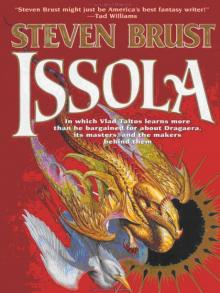 Issola
Issola Orca
Orca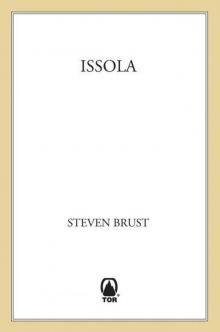 Issola (Vlad Taltos)
Issola (Vlad Taltos)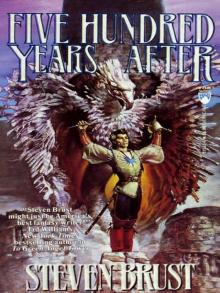 Five Hundred Years After
Five Hundred Years After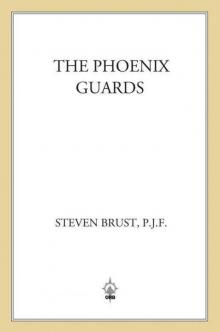 The Phoenix Guards
The Phoenix Guards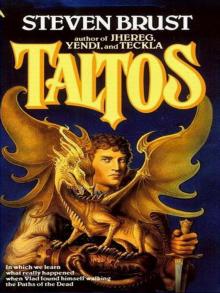 Taltos
Taltos![[Vlad Taltos 06] Athyra Read online](http://i1.bookreadfree.com/i1/03/24/[vlad_taltos_06]_athyra_preview.jpg) [Vlad Taltos 06] Athyra
[Vlad Taltos 06] Athyra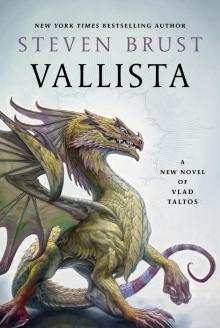 Vallista--A Novel of Vlad Taltos
Vallista--A Novel of Vlad Taltos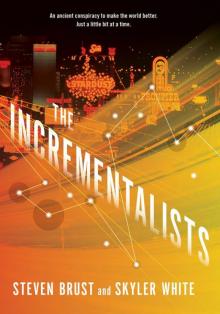 The Incrementalists
The Incrementalists![[Vlad Taltos 04] Taltos Read online](http://i1.bookreadfree.com/i/03/24/[vlad_taltos_04]_taltos_preview.jpg) [Vlad Taltos 04] Taltos
[Vlad Taltos 04] Taltos![[Vlad Taltos 03] Teckla (v 1.1) Read online](http://i1.bookreadfree.com/i1/03/27/[vlad_taltos_03]_teckla_v_1_1_preview.jpg) [Vlad Taltos 03] Teckla (v 1.1)
[Vlad Taltos 03] Teckla (v 1.1)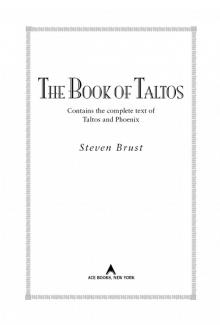 The Book of Taltos
The Book of Taltos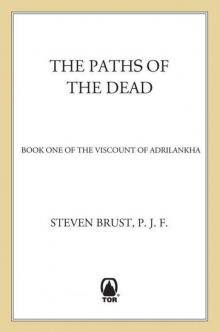 The Paths of the Dead (Viscount of Adrilankha)
The Paths of the Dead (Viscount of Adrilankha) Jhegaala (Vlad Taltos)
Jhegaala (Vlad Taltos)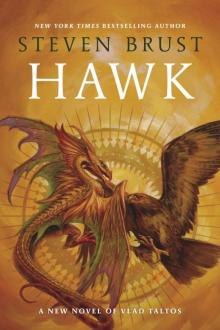 Hawk (Vlad)
Hawk (Vlad)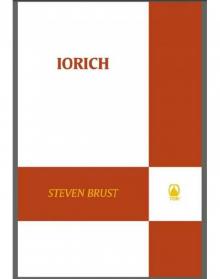 Iorich
Iorich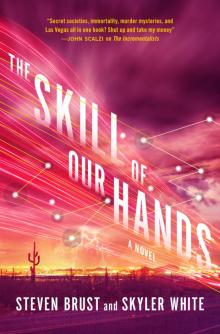 The Skill of Our Hands--A Novel
The Skill of Our Hands--A Novel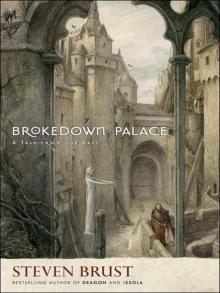 Brokedown Palace
Brokedown Palace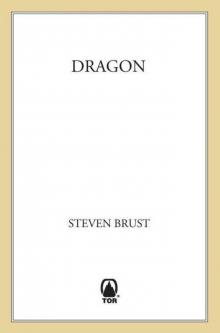 Dragon (Vlad Taltos)
Dragon (Vlad Taltos) Dragon
Dragon Athyra
Athyra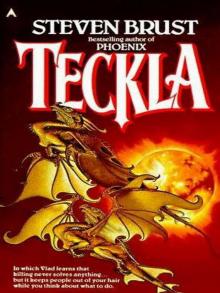 Teckla
Teckla Dzur
Dzur